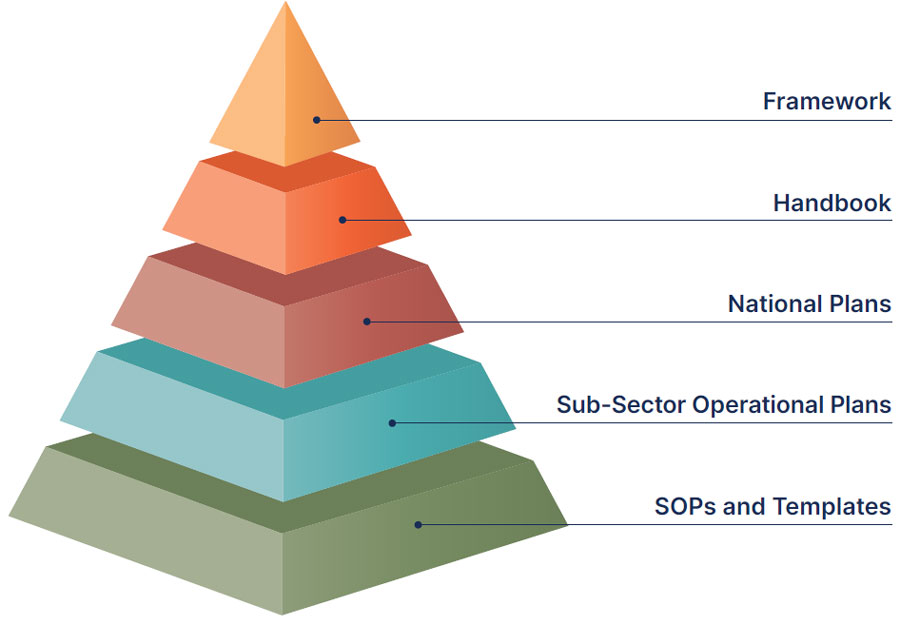A hierarchy of documents underpins the Australian Government’s crisis management arrangements. Documents subordinate to the Framework must align with the Framework in describing their specific arrangements.

- The Framework is the Australian Government’s capstone policy framing Australia’s national crisis management arrangements. It is maintained by the Department of the Prime Minister and Cabinet (PM&C).
- The Handbook complements the Framework and provides principles-based crisis management guidance for senior officials. It is maintained by PM&C.
- National plans for hazards identified in this Framework articulate the hazard-specific coordination arrangements, their linkages to Australian Government coordination arrangements, relevant legislation and application of the principles of this Framework. These plans are maintained by relevant Australian Government agencies.
- Sub-sector operational plans, where required, articulate operational requirements, responsibilities and governance for specific types of incidents within a sector. They are maintained by the relevant portfolio agencies and aligned to relevant national plans.
- Standard operating procedures (SOPs) and templates support consistent responses across Australian Government agencies. They are maintained by the relevant portfolio agencies.
A list of national plans for identified hazards in this Framework can be found in Appendix A (p. 47). Sub-sector operational plans are referenced within relevant national plans.
The National Emergency Management Agency (NEMA) maintains guidance to support Australian Government agencies in developing, reviewing and maintaining their plans.
